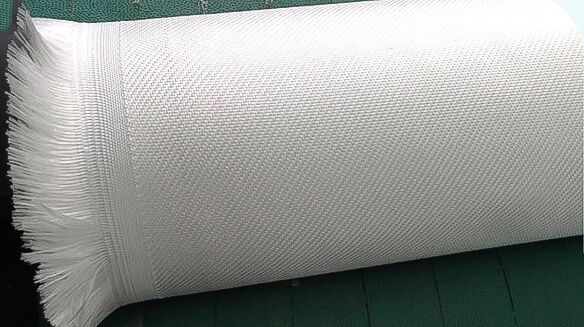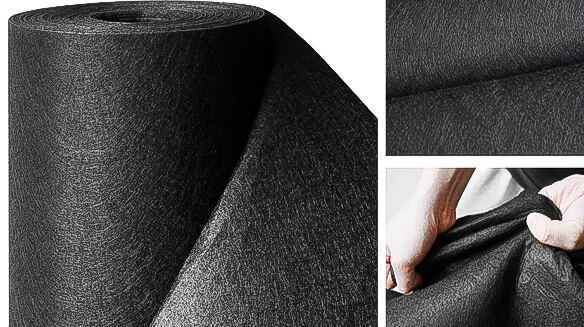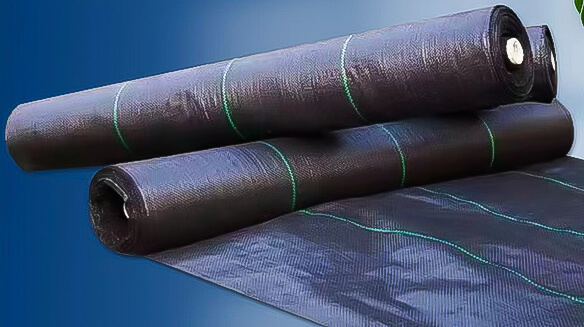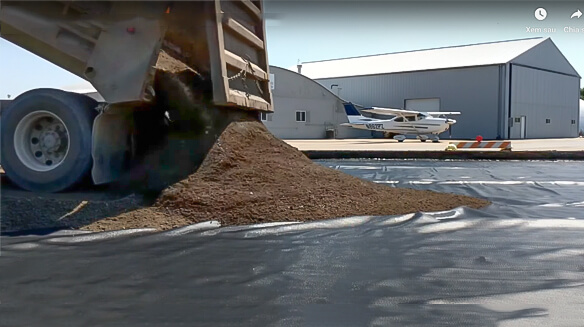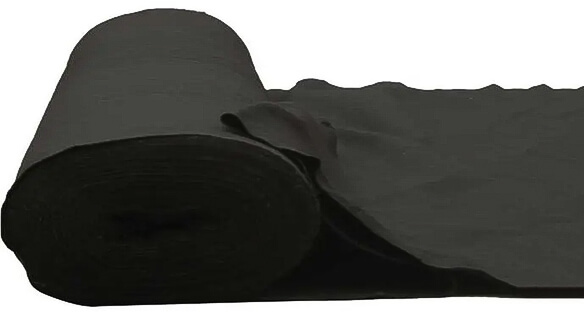Contents
- Is Geotextile Fabric Permeable: A study of woven geotextiles
- Introduction to Geotextile Fabric: A Permeable Material
- Role of Medium-Weight Geotextile Fabric in Parking Lot Construction
- Environmental Impact of Woven Geotextiles: A Detailed Analysis of the Kind of Material
- How Permeable is Your Geotextile Fabric? A Helpful Reply
- Exploring the Versatility of Geotextile Material in Sustainable Development
- FAQs
- Conclusion
Is Geotextile Fabric Permeable: A study of woven geotextiles
Introduction to Geotextile Fabric: A Permeable Material
Geotextile fabric, a type of geosynthetic material, plays a vital role in numerous civil engineering projects. This permeable membrane filters particles effectively while letting water flow freely. Woven geotextile fabrics, because of their superior durability and strength, have become more popular than nonwoven options. These fabrics boast a wide range of characteristics that make them indispensable in various applications.
Many people find the permeability of geotextile fabrics confusing, but these fabrics actually demonstrate impressive permeability. Thanks to their engineered structure, they allow unhindered water flow and effectively block the passage of undesirable materials. Construction projects greatly benefit from this permeability in tasks such as ground stabilization, erosion control, and filtration.
Nevertheless, to fully reap the benefits of their permeability, you must select the appropriate geotextile fabric. With the wide array of options in the market, understanding the distinctions between woven geotextile fabrics and nonwoven materials is essential. Choosing the right material ensures optimal use and maximizes their potential contribution to the success of any given project.
Understanding the Intermediate Grade of Geotextile Fabric
Gaining a comprehensive understanding of the intermediate grade of geotextile fabric is crucial for assessing its practical applications and performance. “Intermediate grade” refers to a level that exceeds lower grades but doesn’t reach the sophistication found in heavily woven, industrial-grade fabrics. This classification, situated between nonwoven geotextiles and robust counterparts, functions as a refined filter by utilizing its permeability attribute. The fabric’s tight-knit weave lets water pass through while effectively blocking the passage of undesirable substances.
How does this work? The fabric’s selective filtering capability comes from its strategically designed woven pattern, which meticulously controls the particles that can pass through. By properly utilizing the balance of permeability in geotextile fabrics, we can effectively tackle a multitude of challenges commonly encountered in construction, civil engineering, and environmental applications. When you choose an intermediate-grade fabric, it’s crucial to consider its unique advantages and how well they match the specific requirements of the intended application. So, is geotextile fabric permeable? Indeed, to a certain extent, it certainly is.
Role of Medium-Weight Geotextile Fabric in Parking Lot Construction
The significance of medium-weight geotextile fabric in parking lot construction is undeniable. This woven material, which combines wire and fabric, enhances the durability and functionality of parking lots. Its moderate weight strikes an ideal balance, ensuring manageability while effectively fulfilling its intended purpose.
One of the key attributes of medium-weight geotextile fabric is its ability to stabilize. Providing a solid foundation, it minimizes the risk of cracks and potholes in the parking lot. In addition, its permeability allows water to flow through the fabric, preventing water accumulation that could potentially damage the surface. Furthermore, the fabric’s interwoven construction serves as an efficient silt fence, effectively curbing soil erosion and sediment runoff.
When it comes to durability, weight management, water control, and soil stabilization, medium-weight geotextiles prove to be a reliable choice. Whether for parking lots, roadways, or other applications, this geotextile fabric is an absolute solution. The ongoing success and growing implementation of geotextiles in these areas underscore their enduring efficiency even more.

Role of Medium-Weight Geotextile Fabric in Parking Lot Construction
Choosing the Right Geotextile Liner for Your Landscape Fabric Needs
When it comes to selecting a geotextile liner for your landscape fabric needs, it is important to go beyond simply choosing any fabric. A thorough understanding of geotextile fabric becomes essential in this process. Geotextile fabric is essentially a permeable material that allows water to pass through while preventing soil erosion, making it an ideal choice for erosion control. However, it is crucial to note that not all geotextile fabrics are the same.
There are nonwoven geotextiles that offer semi-impermeability and woven fabrics that provide full permeability. Additionally, there is geosynthetic geotextile fabric, which is a premium material known for its versatility across various applications. Therefore, when considering landscape fabric, it is important to assess the specific requirements of the project. For instance, a parking lot construction might benefit from a medium-weight geotextile fabric, while challenging terrains may call for the robustness of nonwoven fabric.
The key lies in identifying the intended application of the fabric. Whether it is solely for erosion control, enhancing the aesthetics of a garden, or even for commercial purposes, there is a suitable geotextile fabric available, waiting to be utilized effectively. Ultimately, making the right choice of geotextile fabric for the specific task at hand is paramount.
Environmental Impact of Woven Geotextiles: A Detailed Analysis of the Kind of Material
Effective Use of Woven Geotextiles in Reducing Environmental Impact
The utilization of woven geotextiles plays a significant role in effectively reducing environmental impact. These materials have a wide range of applications, primarily serving as permeable filters that allow water to flow while preventing soil migration. With their strength and filtration capabilities, woven geotextiles excel in various filtration tasks.
Both woven and nonwoven geotextiles exhibit effective permeability properties, making them essential in construction projects by facilitating water flow and preventing hydraulic instability. However, it is important to acknowledge that woven geotextiles differ from nonwoven geotextiles in terms of permeability, strength, and overall fabric structure.
When selecting the appropriate geotextile liner for landscape fabric needs, it is crucial to consider factors such as permeability, strength, and intended usage. For instance, medium-weight geotextile fabric is commonly employed in parking lot construction due to its strength and excellent filtering properties. It represents an intermediate grade of geotextile fabric that strikes a balance between strength and permeability.
Furthermore, the integration of these fabrics in various applications contributes to the reduction of environmental impact. By using woven geotextiles, there is a decreased reliance on natural aggregate materials, thereby preserving precious natural resources.
How Permeable is Your Geotextile Fabric? A Helpful Reply
If you’ve been wondering about the permeability of your geotextile fabric, here’s a helpful response. Geotextile fabric, whether woven or nonwoven, possesses varying degrees of permeability depending on the type and density of the material. Woven geotextile fabrics, known for their strength and durability, have a moderately high permeability compared to other fabrics. They allow water to pass through, making them suitable for applications requiring water absorption or drainage.
Nonwoven geotextiles, on the other hand, exhibit complete and comprehensive permeability, absorbing water at a significantly higher rate. However, these fabrics may lack the same level of strength as woven geotextiles. When choosing the ideal cover fabric, it is crucial to consider the specific requirements of the area in question, such as the need for strength or increased water permeability.
Additionally, the permeability of geotextile fabric can also be influenced by the use of geosynthetic materials during manufacturing. In summary, the level of permeability in your geotextile fabric can vary significantly based on its composition. Therefore, conducting a detailed study on the fabric permeability of woven geotextiles is of utmost importance.
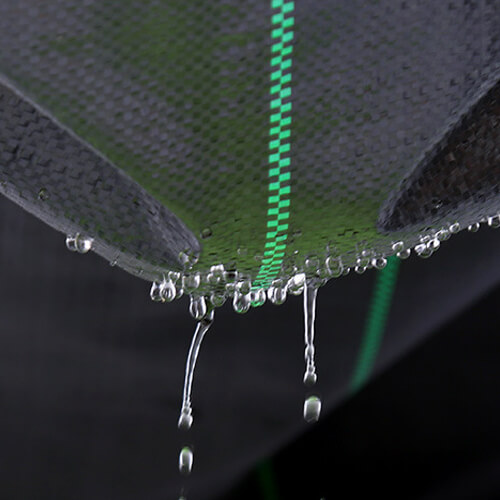
water permeability of geotextiles
Exploring the Versatility of Geotextile Material in Sustainable Development
Geotextile materials, including woven geotextile fabric, play a significant role in promoting sustainable development. These materials offer versatility beyond conventional applications, providing valuable solutions for water management and erosion control challenges. For example, when used as a pond liner, geotextile fabric acts as a protective barrier, preventing water leakage and ensuring the sustainability of the pond.
Geotextile fabrics possess high permeability, enabling water to pass through while effectively filtering out fine particles. This comprehensive functionality not only makes them suitable for various applications but also contributes to environmental preservation, as highlighted in our previous analysis of the environmental impact of woven geotextiles. These fabrics are not only environmentally friendly but also beneficial, enhancing the overall sustainability of projects.
When selecting the appropriate geotextile liner for landscape fabric needs, it is important to consider the fabric’s permeability. As we have explored in our previous discussions, the permeability of geotextile fabric can significantly impact its effectiveness. By choosing woven geotextiles, you are making a practical and sustainable choice that aligns with the principles of sustainable development.
FAQs
1. What is geotextile fabric?
Geotextile fabric is a synthetic fiber material that has been used since the 1970s for a variety of construction projects, erosion control, soil stabilization, and environmental projects. It is composed of polypropylene or high-density polyethylene fibers woven together.
2. Is geotextile fabric an environmentally friendly product?
Yes, geotextile fabrics are designed to be durable yet breathable which keeps moisture out while allowing water to flow through freely without pooling beneath surfaces such as roads or land surfaces that may be susceptible to flooding. In addition, they last up to 30 years in normal conditions and can easily break down once removed from their application preventing it from inhabiting landfill sites indefinitely.
3. Do geotextiles release harmful chemicals into the environment?
When properly manufactured and installed according to industry standards, geotextiles should not release harmful chemicals into the environment. It is important to choose high-quality products from reputable manufacturers to ensure minimal environmental impact.
4. Can geotextiles be recycled or reused?
Yes, many types of geotextiles can be recycled or reused after their initial application. Some companies offer recycling programs for used geosynthetic materials, helping reduce waste and conserve resources in the long run.
Conclusion
Woven geotextile fabric is a vital material in construction, with its ability to allow water permeability and effective particle filtration. Choosing the right geotextile fabric and understanding its properties is crucial for achieving optimal performance in construction projects. Utilizing medium-weight geotextile fabric in parking lot construction can enhance durability and water control. Integrating geotextile fabric in landscape applications also contributes to environmental impact reduction and the preservation of natural resources.
Related posts:

